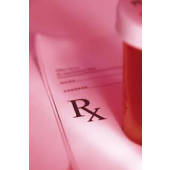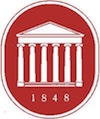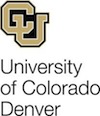Top 75 Pharmacy Schools in the U.S.

 16. University of Arizona College of Pharmacy, Tucson, Arizona
16. University of Arizona College of Pharmacy, Tucson, Arizona
The University of Arizona was established in 1885 as the state’s land-grant university. The school, which consisted of just 40 acres, 32 students, and six teachers, now sits on a 387-acre campus and is home to 38,057 students. The school, which ranks in the top 20 among all public universities by the National Science Foundation, is proud to say that it operates on the oldest continually maintained green space in Arizona.
University of Arizona offers more than 300 undergraduate and graduate degrees through 20 colleges and 11 schools across three campuses. This includes the College of Pharmacy. Founded in 1947, the University of Arizona College of Pharmacy ranks among the top 20 colleges of pharmacy “in terms of external funding for research, including funding from the National Institutes of Health.”
Home to around 471 students (2013), the College offers a Pre-pharmacy program, a Dual Pharm.D./Ph.D., and Ph.D. degrees in Drug Discovery and Development, Pharmaceutics & Pharmacokinetics, and Pharmacology & Toxicology. The College also offers a M.S. and Ph.D. in Pharmaceutical Economics, Policy, and Outcomes.
Tuition and fees are based on number of units and residency status. Arizona residents pay $2,471.85 for 3 units, $4,913.85 for 6 units, and $5,762.85 for 7+ units. Non-resident tuition and fees are $4,616.85 for 3 units, $9,203.85 for 6 units, and $13,698.85 for 9+ units.
 17. University of Tennessee College of Pharmacy, Memphis, Tennessee
17. University of Tennessee College of Pharmacy, Memphis, Tennessee
Established in 1794 as Blount College, the University of Tennessee consists of four campuses and it is home to 49,556 students. Campuses include Knoxville (main), Chattanooga, Martin, and the Health Science Center in Memphis. The College of Pharmacy is located at the Health Science Center.
The University of Tennessee College of Pharmacy dates back to 1898 when it consisted of just one campus at the University’s Knoxville location. Today, the school has two campuses—Memphis and Knoxville, and it ranks among the top 20 pharmacy schools in the nation by U.S. News & World Report.
One of the first pharmacy schools to grant the Pharm.D. degree (1969) and one of the first to adopt the Pharm.D. as the entry-level degree (1984), the College of Pharmacy has a number of offerings for pharmacy students. Programs include the Pharm.D./Ph.D. dual degree and Ph.D. degrees in four areas including Medicinal Chemistry, Bioanalysis, Pharmaceutics, and Pharmacometrics.
Tuition for the Memphis campus is $10,687 for 9+ credit hours for residents and $20,472 for 9+ credits for non-residents. Tuition for the Knoxville campus (years 2 and 3) is $10,870.50 for 9+ credits (residents) and $20,655.50 for non-residents. Year four is $10,834.50 for residents (9+ credits) and $20,619.50 for non-residents. Please note that tuition rates are subject to change without notice.
 18. University of Southern California School of Pharmacy, Los Angeles, California
18. University of Southern California School of Pharmacy, Los Angeles, California
Better known as USC, the University of Southern California opened its doors in 1880 to just 53 students. Today, the school sits on 226 acres and it is home to 40,000 students. Often ranked among the nation’s top 50 colleges by U.S. News & World Report, USC offers hundreds of programs across more than 20 academies colleges, and schools. This includes the University of Southern California School of Pharmacy.
The School of Pharmacy was established in 1905 and is considered one of the best in the nation. It is home to nearly 1,000 students and it offers an endless number of programs. Offerings include the Pharm.D., the Pharm.D./MBA., the Pharm.D./J.D., the Pharm.D./Ph.D., Pharm.D./MPH, the Pharm.D./M.S. in Regulatory Science, Gerontology, or Global Medicine, and a Ph.D. in Clinical and Experimental Therapeutics.
A M.S. in Regulatory Science is offered as well as the nation’s only Professional Doctorate in Regulatory Science (D.R.Sc.). The School also offers a Master’s degree and Doctoral programs in Molecular Pharmacology and Toxicology, Pharmaceutical Sciences, and Pharmaceutical Economics and Policy, and a M.S. and Ph.D. in Pharmaceutical Sciences.
Finally, the School of Pharmacy offers a M.S. in Management and Drug Development, a M.S., Progressive M.S. and Ph.D. in Health Economics, a M.S. in Healthcare Decision Analysis, and a Pre-pharmacy program.
Tuition for the University of Southern California School of Pharmacy is $46,862 per academic school year.
 19. University of California, San Diego - Skaggs School of Pharmacy and Pharmaceutical Sciences, San Diego, California
19. University of California, San Diego - Skaggs School of Pharmacy and Pharmaceutical Sciences, San Diego, California
The University of California San Diego (UC San Diego) was officially established on November 18, 1960. The school began with just 63 acres of donated land. Today, UC San Diego sits “near the Pacific Ocean on 1,200 acres of coastal woodland in La Jolla, California.” The school is home to 29,052 students enrolled in more than 100 fields of study, across 10 divisions and schools.
Ranked among the Top 20 Public Universities in the nation by U.S. News & World Report, UC San Diego is home to one of the nations youngest, and most successful pharmacy schools. Skaggs School of Pharmacy and Pharmaceutical Sciences is home to 240 Pharm.D. students, 60 Ph.D. students, and 30 pharmacy residents (Fall 2013).
In addition to the Pharm.D., Skaggs offers a B.S. Chemistry/Doctor of Pharmacy, and a Pharm.D./Ph.D. program. The cost of study for Skaggs School of Pharmacy and Pharmaceutical Sciences is $11,762.50 per semester for residents and $15,844.50 per semester for non-residents.
 20. University of Iowa College of Pharmacy, Iowa City, Iowa
20. University of Iowa College of Pharmacy, Iowa City, Iowa
Established in 1847, the University of Iowa is Iowa's first public institution of higher learning. It was also the first school west of the Mississippi to establish a law school and an educational radio station. Today, the school ranks among the Top 50 Public Universities in the country and it has an impressive enrollment of 30,500 students.
The University of Iowa sits on a 1,900-acre campus and it offers more than 100 academic programs across 11 colleges—including the College of Pharmacy.
Founded in 1885, the University of Iowa College of Pharmacy is the 4th oldest College of Pharmacy in a state-supported university. The Doctor of Pharmacy (Pharm.D.)program ranks in the Top 20 and 48 percent of Iowa's pharmacists graduate from the school’s College of Pharmacy.
Home to 410 professional students and 73 graduate students, the University of Iowa College of Pharmacy offers the Pharm.D. (as stated), the Pharm.D./MPH; Ph.D. degrees in Pharmaceutics, Clinical Pharmaceutical Sciences, Pharmaceutical Socioeconomics, and Medicinal and Natural Products Chemistry, and a M.S. in Pharmaceutics.
Tuition and mandatory fees for the College of Pharmacy are $10,692 per semester for Iowa residents and $19,294 per semester for non-residents.
 21. University of Washington School of Pharmacy, Seattle, Washington
21. University of Washington School of Pharmacy, Seattle, Washington
The University of Washington was founded in 1861 with just 10 acres of land in what would become downtown Seattle. Today, the school sits on more than 700 acres at its main campus, 46 acres at its Tacoma, WA campus, and 128 acres at the Bothell, WA campus. Home to more than 49,000 students, the University of Washington offers more than 100 academic programs across 16 colleges and schools.
The University of Washington School of Pharmacy was established in 1894 as the nation's 51st school of pharmacy. When it opened its doors, the school had just 21 students. Today, the school is home to nearly 500 students. The school offers the Pharm.D., a M.S. in Medicinal Chemistry, Pharmaceutical Outcomes Research & Policy Program (PORPP), and Pharmaceutics, a Professional M.S. in Biomedical Regulatory Affairs, a Ph.D. in Medicinal Chemistry, Pharmaceutics, and PORPP.
The University of Washington School of Pharmacy also offers dual degrees including the Pharm.D./Physician Assistant, Pharm.D./M.S., and the Pharm.D./Ph.D. Tuition rates and fees are $26,328 per year for residents and $47, 964 per year for non-residents.
 22. University at Buffalo School of Pharmacy and Pharmaceutical Sciences, Buffalo, New York
22. University at Buffalo School of Pharmacy and Pharmaceutical Sciences, Buffalo, New York
Founded in 1846, the University of Buffalo is “a flagship institution in the State University of New York system.” With three campuses and 57,904 students, University of Buffalo is the largest and “most comprehensive campus in the 64-campus SUNY system.” The school sits on more than 1,300 acres (all campuses), and it offers around 400 degree programs throughout the College of Arts and Sciences, 11 professional schools, and a graduate division at Roswell Park Cancer Institute.
Founded in 1886, the University at Buffalo School of Pharmacy and Pharmaceutical Sciences ranks among the top pharmacy schools in the U.S. It is “the second-oldest component of the University at Buffalo and the only pharmacy school in the State University of New York (SUNY) system.
The School offers Pharm.D., and dual degrees including the Pharm.D./MBA, Pharm.D./MPH, Pharm.D./JD, a Pharm.D./Ph.D., and a Pharm.D./M.S. The School also offers a M.S. and a Ph.D. in Pharmaceutical Sciences, a B.S. in Pharmaceutical Sciences, an accelerated B.S./M.S. in Pharmaceutical Sciences, and a Pre-pharmacy program.
The cost of tuition for the School of Pharmacy and Pharmaceutical Sciences is $22,610 for 9.5 months.
 23. University of Mississippi School of Pharmacy, Jackson, Mississippi
23. University of Mississippi School of Pharmacy, Jackson, Mississippi
Founded in 1848, the University of Mississippi is the flagship university for the state of Mississippi. When it opened its doors, the school had only 80 students. Today, “Ole Miss” is home to more than 21,500 students, making it the largest school in the state of Mississippi.
The University of Mississippi’s main campus sits on 2,500 acres, and the school has four other campuses in Southaven, Tupelo, Booneville, and Grenada. Ole Miss offers more than 100 academic programs across more than a dozen colleges and schools. This includes the School of Pharmacy.
The University of Mississippi School of Pharmacy was founded in 1908. With more than 800 students enrolled, the School of Pharmacy is the state’s only pharmacy school. The School offers the Pharm.D., a M.S. and Ph.D. in Pharmaceutical Sciences with emphases in Environmental Toxicology, Medicinal Chemistry, Pharmaceutics, Pharmacognosy, Pharmacology, and Pharmacy Administration, a B.S. in Pharmaceutical Sciences, and a Pre-pharmacy program.
Tuition for the University of Mississippi School of Pharmacy varies by program and year. Early Education and Pre-pharmacy students pay $9,292.00 per year for tuition and fees. In-state Professional Pharmacy students pay $17,898 for the first year of study, $17,588.00 for the second year, $18,996 for year 3, and $18,960 for year 4. Non-residents pay $12,776 (Early Education and Pre-pharmacy), $20,138 (Professional Pharmacy/year 1-2), and $21,984 (Professional Pharmacy/year 3-4).
 24. University of Colorado Skaggs School of Pharmacy and Pharmaceutical Sciences, Aurora, Colorado
24. University of Colorado Skaggs School of Pharmacy and Pharmaceutical Sciences, Aurora, Colorado
Founded in 1876, the University of Colorado is a public institution with more than 60,000 students across four campuses. Campuses include the main campus in Boulder and smaller campuses in Colorado Springs, Denver, and Aurora—home of the University of Colorado Anschutz Medical Campus. The main campus (Boulder) sits on 700 acres and it offers more than 150 programs though nine colleges and schools.
The Anschutz Medical Campus houses the University of Colorado Skaggs School of Pharmacy and Pharmaceutical Sciences. Established in 1911, the School of Pharmacy opened its doors with just two students and one faculty member. Today, the school is home to 600 students and 55 faculty members.
The Skaggs School offers the Pharm.D., a nontraditional Pharm.D., Ph.D. degrees in Pharmaceutical Sciences and Toxicology, and Pharmaceutical Outcomes Research, which is a Track in the graduate program in Pharmaceutical Sciences. Tuition for the 2013-14 academic year is $24,614 for residents and $38,891 for non-residents.
 25. University of Connecticut School of Pharmacy, Storrs, Connecticut
25. University of Connecticut School of Pharmacy, Storrs, Connecticut
Founded in 1881, the University of Connecticut is a land grant & Sea Grant college consisting of one main campus and five regional campuses. The school, which sits on 4,067 acres (all campuses) is home to more than 30,000 students enrolled in more than 200 academic programs throughout 14 schools and colleges. This includes the School of Pharmacy.
The University of Connecticut School of Pharmacy opened its doors on October 20, 1925. Commonly called “UConn School of Pharmacy,” the School offers the Pharm.D., a Ph.D. in Pharmaceutical Sciences, and several dual degrees including the Pharm.D./MBA, Pharm.D./MPH, and the Pharm.D./Ph.D. in Pharmaceutical Sciences.
Tuition rates are $12,022 for the Pre-pharmacy program and Professional Years 1-2 (residents) and $23,306 for years 3-4. New England regional residents [MA, ME, NH, VT] pay $18,964 for years 1-2 and $38,712 for years 3-4. Non-resident tuition is $30,970 for Pre-pharmacy and Professional Years 1-2, and $47,098 for years 3-4.
Pages

- Facebook Like
- Google Plus One
- 744939 reads


